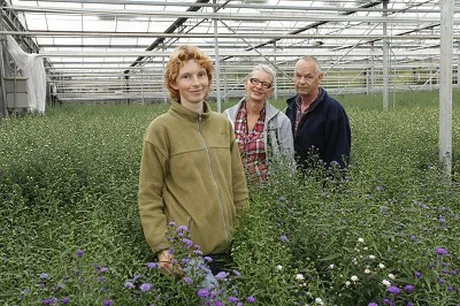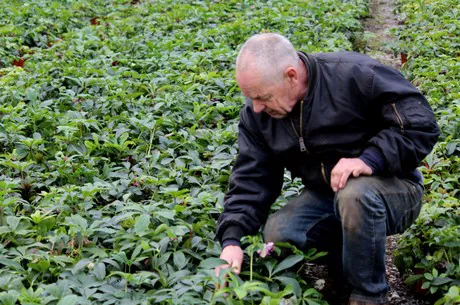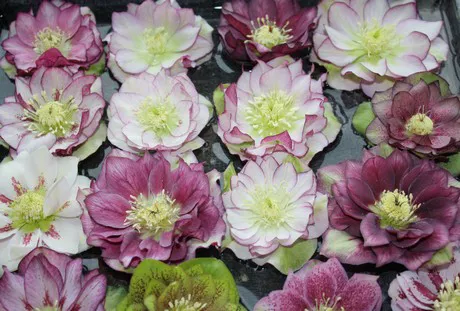
Ellen and her parents Peter en Gerda Akerboom. Her father also breeds and grows Asters.
Being compared with helleborus niger
Over the years, the helleborus increased in popularity. "They are more often presented in home and living magazines and television programmes. So even though the helleborus flowers in a difficult period of the year - in winter time - when not many people visit garden centers, the sales are increasing."
Akerboom grows both, the helleborus orientalis and niger herself - about 80,000 plants a year that are being supplied all over Europe - and also notices a rising demand for both varieties. However, the demand for the orientalis used to lag behind significantly, but is now finally getting more traction in the market.
"In trade, buyers used to compare the looks of the orientalis with that of helleborus niger at the time they are buying it. Then, the orientalis often looses as the niger has more and bigger flowers. However, when looking at garden performance, the orientalis wins. The niger only flowers for one season and then dies, while the orientalis remains in the garden for about 10 to 20 years and only becomes bigger and gives more flowers year after year. And this habit is now more better valued", says Akerboom.

Labor intensive breeding process
There are not so many helleborus orientalis on the market. According to Akerboom, it is often not being bred by the large breeding companies as it is a time-consuming process which entails lots of manual labor. "Picking and selecting the right varieties takes a lot of time. On top of that, the seeds are hand-picked and the flowers are being pollinated manually", says Akerboom.
Together with her father, she has spent years in breeding, making the orientalis an interesting plant for both the grower and end consumer. "20 years ago, it took about three years till the plant, started to flower. Now, we have bred an assortment of orientalis that flower within a year and this is, from the cultivation perspective, very interesting for growers. Additionally, the varieties become increasingly more homogenous in growth as we are continuously improving them."
Besides these flowering habits, enhancing the ornamental value of the plant is important too. Last year, for example, Akerboom introduced a double flowered variety, called the Double Ellen. This variety is protected by trademark law and is developed for both pot as well as for the cut culture. According to Akkerboom, the ornamental value of the double flowered varieties is much higher than it is with the single flowered varieties. "And also after they finished flowering the flowers still remain beautiful for a long time, which also prolongs their value on the shelves in a garden center", she adds.

The Double Ellen.
On an annual basis, Akerboom produces one million seedlings, which are being shipped all over the world. In the US and Europe, the majority of her helleborus plugs are being supplied by Fleurizon International.
Future for orientalis
Akerboom sees a bright future for the orientalis. "The trade and large growers are starting to show their interest in this variety. Currently, only 5 percent of the helleborus market consists of orientals, so there is a lot of room to grow." And according to Akerboom, there is also a lot of room to grow and improve on the breeding and cultivation end. "Regarding breeding, we continuously try to improve the plant habits, like improving homogenous growth, more disease resistance, and so on. Regarding cultivation, growers should get used to a different cultivation procedure. The orientalis for example grows quickly in spring, while the niger does in autumn. So, they should employ a different fertilizing scheme, for example."
For more information
 Nachtvlinder bv
Nachtvlinder bvEllen Akerboom
Email: ellen@asters.nl
www.double-ellen.nl
